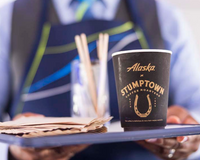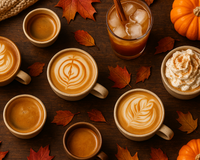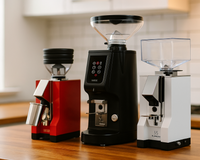How Much Caffeine is in a Can of Monster Energy Drink Compared to Your Favorite Coffee?
Energy drinks are popular beverages that are typically marketed as a way to increase energy, improve alertness, and enhance physical performance. They often contain high levels of caffeine, a stimulant that can have both positive and negative effects on the body. While caffeine is also found in other beverages like coffee and tea, energy drinks tend to have much higher levels, which can make them more risky for some people. In this blog post, we will focus on one of the most popular energy drink brands, Monster, and investigate how much caffeine is in a Monster drink and compare it to coffee.
Today, we explore the topic of caffeine in energy drinks, specifically focusing on Monster energy drinks, and compare it to the caffeine content of coffee. We will provide accurate information about the caffeine content of Monster drinks, discuss the potential risks of consuming too much caffeine, and highlight the differences between consuming caffeine from energy drinks versus coffee. Our goal is to provide readers with the information they need to make informed decisions about their caffeine intake and understand the potential effects on their health.
How much caffeine is in a Monster drink?

The caffeine content in a Monster drink can vary depending on the type of drink and the serving size. Here are some approximate caffeine levels for some of the most popular Monster energy drinks:
- Original Monster (16 fl. oz. can): 160 mg of caffeine
- Monster Lo-Carb (16 fl. oz. can): 140 mg of caffeine
- Monster Ultra (16 fl. oz. can): 140 mg of caffeine
- Monster Java (15 fl. oz. can): 150 mg of caffeine
How Monster compares to other energy drinks caffeine-wise
- Red Bull (8.4 fl. oz. can): 80 mg of caffeine
- Rockstar (16 fl. oz. can): 160 mg of caffeine
- NOS (16 fl. oz. can): 160 mg of caffeine
- Bang (16 fl. oz. can): 300 mg of caffeine
As you can see, Monster energy drinks typically contain more caffeine than other popular energy drink brands like Red Bull and Rockstar, but they may not have the highest caffeine content overall. For example, Bang energy drinks contain significantly more caffeine per serving than Monster drinks.
Related Article: Does coffee ice cream have caffeine?
Risks of consuming too much caffeine
Consuming too much caffeine can have negative effects on the body, including:
- Insomnia and sleep disturbances
- Jitteriness and anxiety
- Increased heart rate and blood pressure
- Dehydration
- Headaches and migraines
- Stomach irritation and digestive issues
In extreme cases, consuming very high levels of caffeine can lead to more serious health problems like seizures, hallucinations, and cardiac arrest. Additionally, consuming large amounts of caffeine on a regular basis can lead to dependence and withdrawal symptoms when trying to cut back. It's important to monitor your caffeine intake and be aware of the potential risks, especially if you have a preexisting medical condition or are sensitive to caffeine. If you have any concerns about your caffeine consumption, it's always a good idea to talk to your healthcare provider.
How does the caffeine in Monster compare to coffee?
Coffee is one of the most popular sources of caffeine in the world. The caffeine content in coffee can vary depending on factors such as the type of coffee bean, the brewing method, and the serving size. Here are some general guidelines for the caffeine content in different types of coffee:
- Drip coffee (8 fl. oz.): 70-140 mg of caffeine
- Espresso (1 fl. oz.): 47-64 mg of caffeine
- Cappuccino (8 fl. oz.): 47-71 mg of caffeine
- Latte (8 fl. oz.): 63-175 mg of caffeine
- Decaf coffee (8 fl. oz.): 2-5 mg of caffeine
It's worth noting that the caffeine content in coffee can vary widely depending on the brand, roast level, and brewing method. Additionally, some specialty coffee drinks like mochas or Frappuccinos can contain additional ingredients that add to the caffeine content. If you're looking to monitor your caffeine intake, it's always a good idea to check the label or ask your barista for information about the caffeine content of your coffee.
How it compares to different types of coffee
- Original Monster (16 fl. oz. can): 160 mg of caffeine
- Drip coffee (8 fl. oz.): 70-140 mg of caffeine
- Espresso (1 fl. oz.): 47-64 mg of caffeine
- Cappuccino (8 fl. oz.): 47-71 mg of caffeine
- Latte (8 fl. oz.): 63-175 mg of caffeine
As you can see, Monster energy drinks typically contain more caffeine per serving than drip coffee or espresso, but the caffeine content can vary widely depending on the type of coffee and the serving size. For example, a 16 fl. oz. can of Monster has approximately the same amount of caffeine as a 12 fl. oz. cup of brewed coffee. It's worth noting that specialty coffee drinks like lattes or cappuccinos may have more milk or other ingredients, which can dilute the caffeine content. Additionally, the type of coffee bean and the brewing method can also affect the caffeine content. Ultimately, the best way to monitor your caffeine intake is to be aware of the caffeine content in your favorite drinks and to consume them in moderation.
Energy drinks vs coffee - Pros and Cons
Pros of consuming caffeine from coffee:
- Lower sugar content: Black coffee contains very little sugar, which can make it a healthier option than sugary energy drinks.
- Natural source of caffeine: Caffeine from coffee comes from natural sources, whereas energy drinks may contain synthetic caffeine.
- Antioxidants: Coffee contains antioxidants that can provide health benefits like reducing inflammation and protecting against chronic diseases.
Cons of consuming caffeine from coffee:
- Jitters: Consuming too much caffeine from coffee can lead to jitters or anxiety.
- Dependency: Consuming caffeine on a regular basis can lead to dependence and withdrawal symptoms when trying to cut back.
- Staining teeth: Drinking coffee can stain teeth over time, which can be a cosmetic concern for some people.















